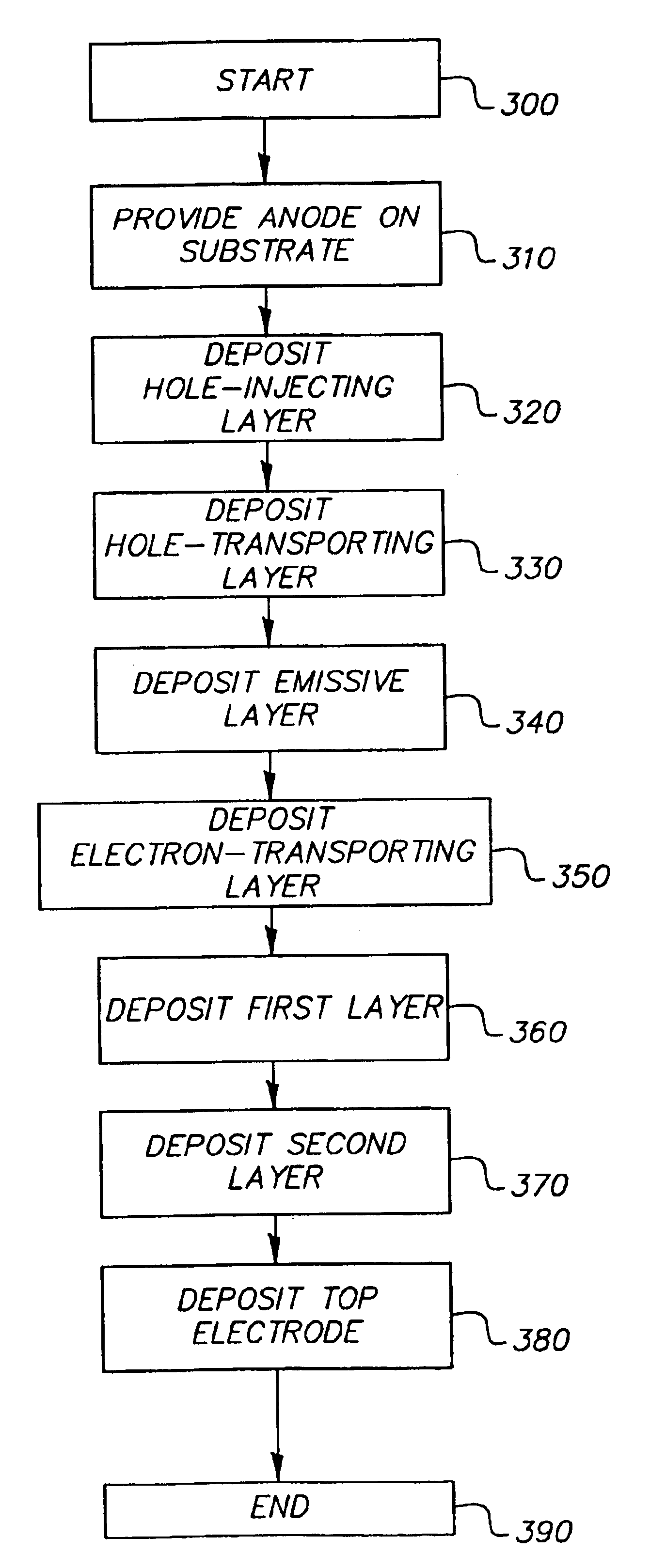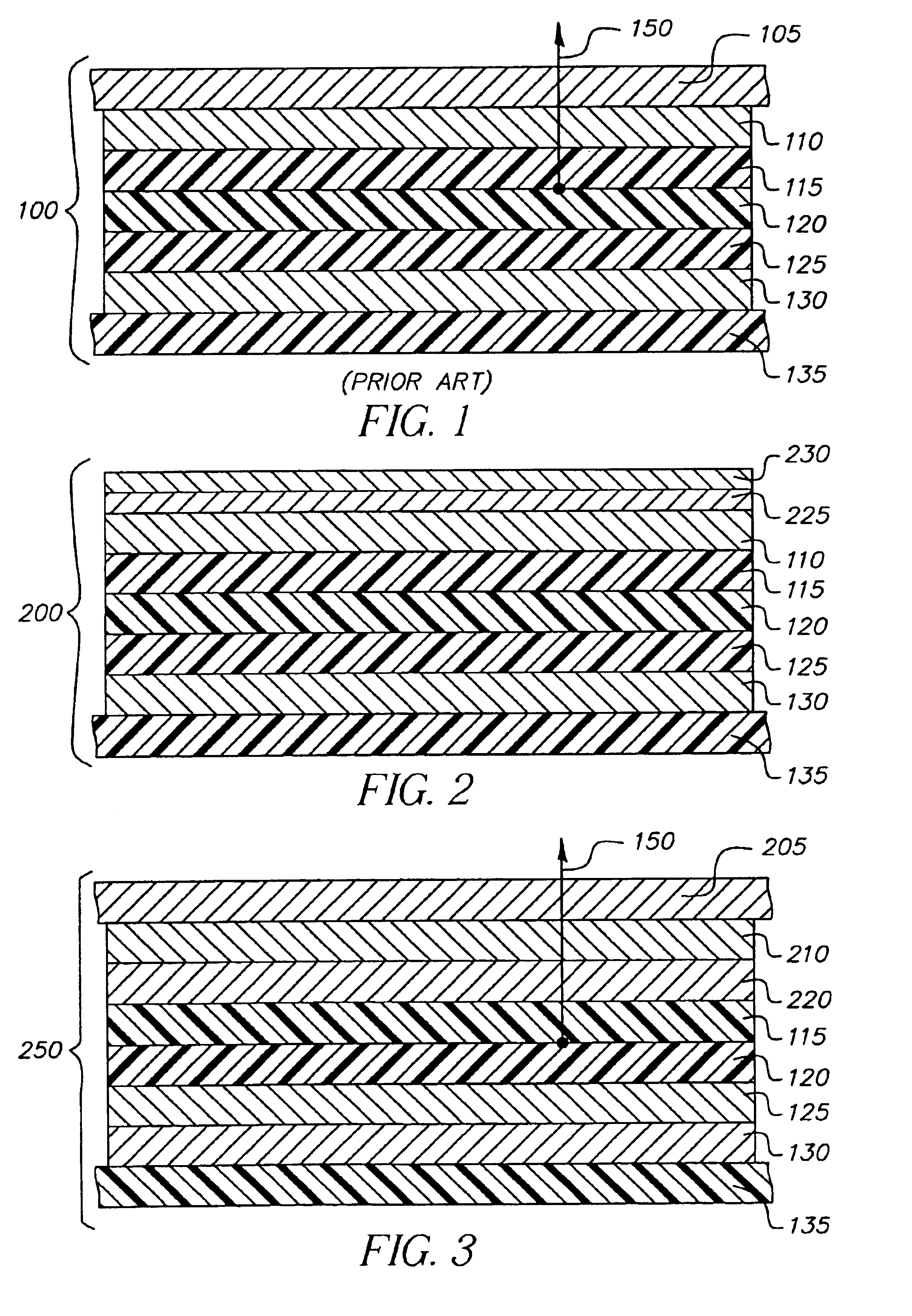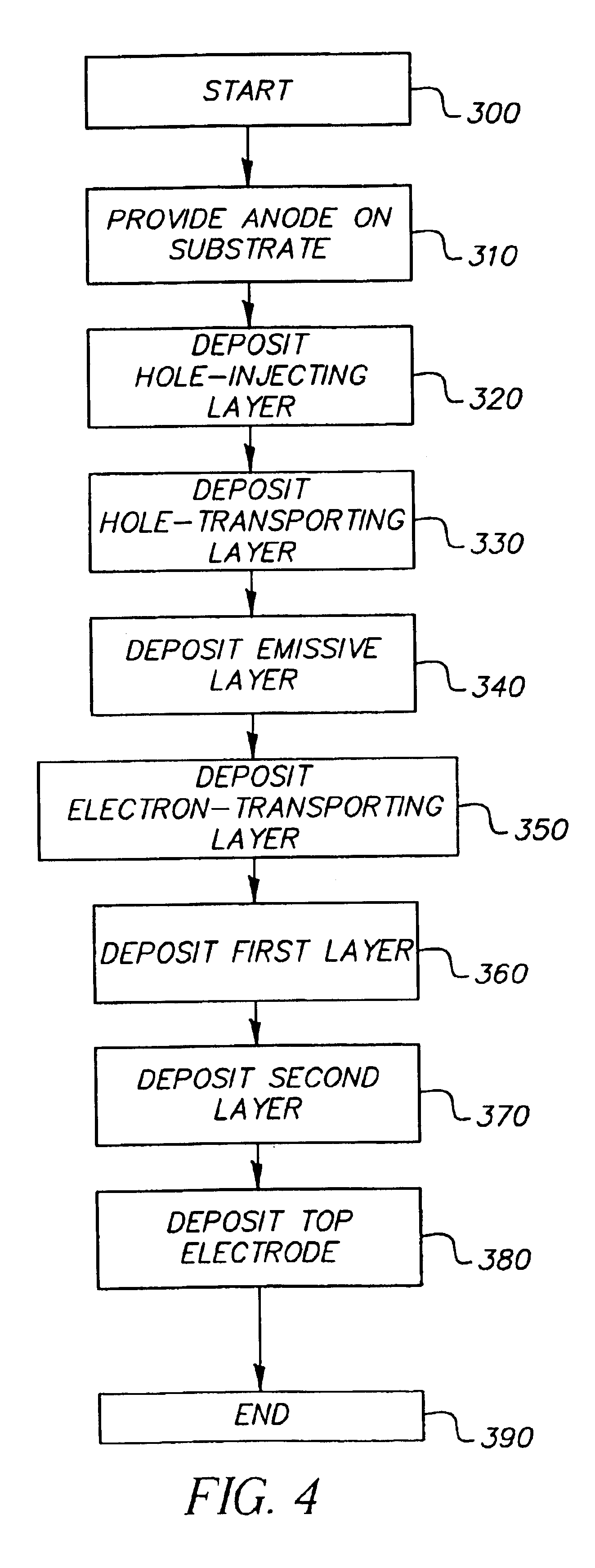Highly transparent top electrode for OLED device
a top electrode, high-transmission technology, applied in the manufacture of electrode systems, cold cathode manufacturing, electric discharge tubes/lamps, etc., can solve the problems of reduced use life of oled devices, increased risk of operational degradation of display devices, and limited light emission area in the general area
- Summary
- Abstract
- Description
- Claims
- Application Information
AI Technical Summary
Benefits of technology
Problems solved by technology
Method used
Image
Examples
example 1
A prior-art bottom-emitting device, device “1A”, was made as described above with 1% C545T as the emissive layer dopant. The device has the following layer structure:Glass(1.1 mm) / ITO(42 nm) / CFx(1 nm) / NPB(50 nm) / 1% C545T in Alq (30 nm) / Alq(20 nm) / LiF(0.5 nm) / Al(100 nm)
example 2
A top-emitting device of the present invention, device “2B” was made with the same hole-transporting, emissive, and electron-transporting layers as the device “1A”. The device “2B” has the following layer structure:Glass(1.1 mm) / Ag(100 nm) / CFx(1 nm) / NPB(50 nm) / 1% C545T in Alq (30 nm) / Alq(20 nm) / RbF(3 nm) / Mg(5 nm) / ITO(60 nm)
example 3
A prior-art bottom-emitting device, device “3A”, was made as described above with 1% DCJTB as the emissive layer dopant. The device has the following layer structure:Glass(1.1 mm) / ITO(42 nm) / CFx(1 nm) / NPB(60 nm) / 1% DCJTB in Alq (30 nm) / Alq(30 nm) / LiF(0.5 nm) / Al(70 nm)
PUM
| Property | Measurement | Unit |
|---|---|---|
| Thickness | aaaaa | aaaaa |
| Current | aaaaa | aaaaa |
| Thickness | aaaaa | aaaaa |
Abstract
Description
Claims
Application Information
 Login to View More
Login to View More - R&D
- Intellectual Property
- Life Sciences
- Materials
- Tech Scout
- Unparalleled Data Quality
- Higher Quality Content
- 60% Fewer Hallucinations
Browse by: Latest US Patents, China's latest patents, Technical Efficacy Thesaurus, Application Domain, Technology Topic, Popular Technical Reports.
© 2025 PatSnap. All rights reserved.Legal|Privacy policy|Modern Slavery Act Transparency Statement|Sitemap|About US| Contact US: help@patsnap.com



